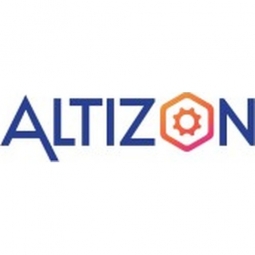
技术
- 应用基础设施与中间件 - API 集成与管理
- 功能应用 - 远程监控系统
- 网络与连接 - 紫蜂
- 平台即服务 (PaaS) - 数据管理平台
- 传感器 - 电表
适用行业
- 公用事业
适用功能
- 商业运营
用例
- 高级计量架构 (AMI)
客户
Sheltrex
关于客户
Sheltrex 利用 Altizon 的物联网平台 – Datonis® 作为其智能城市的传感器数据主干和完美的物联网平台。
挑战
面临着几个挑战:制造一种能够承受从低至 90v 到高达 320v 的广泛电压波动的设备具有挑战性。由于该设备将安装在偏远地区,因此其弹性至关重要。该设备将不得不应对网络覆盖差的问题,并且在网络不可用时能够存储和重新传输数据,这在印度农村地区很常见。该设备最多可存储 30 天的数据。
解决方案
Altizon 的智能城市物联网平台和解决方案与客户合作,在第一阶段构建了两个连接的设备。一个连接的仪表将位于仪表面板上,准确测量所有关于功耗和电能质量的指标,并将该数据安全地传输到 Datonis®。客户向房主提供了使用 Datonis® 应用程序 API 构建的定制移动应用程序。这些应用程序将允许客户查看他们的公用事业消耗、设置阈值警报和通知、控制设备并直接从移动应用程序支付账单。
收集的数据
Electricity Meters, Power Consumption
运营影响

Case Study missing?
Start adding your own!
Register with your work email and create a new case study profile for your business.
相关案例.

Case Study
Automation of the Oguz-Gabala-Baku water pipeline, Azerbaijan
The Oguz-Gabala-Baku water pipeline project dates back to plans from the 1970’s. Baku’s growth was historically driven by the booming oil industry and required the import of drinking water from outside of the city. Before the construction of the pipeline, some 60 percent of the city’s households received water for only a few hours daily. After completion of the project, 75 percent of the two million Baku residents are now served around the clock with potable water, based on World Health Organization (WHO) standards. The 262-kilometer pipeline requires no pumping station, but uses the altitude differences between the Caucasian mountains and the capital to supply 432,000 m³/d to the Ceyranbatan water reservoir. To the people of Baku, the pipeline is “the most important project not only in 2010, but of the last 20 years.”

Case Study
GPRS Mobile Network for Smart Metering
Around the world, the electricity supply industry is turning to ‘smart’ meters to lower costs, reduce emissions and improve the management of customer supplies. Smart meters collect detailed consumption information and using this feedback consumers can better understand their energy usage which in turn enables them to modify their consumption to save money and help to cut carbon emissions. A smart meter can be defined in many ways, but generally includes an element of two-way communication between the household meter and the utility provider to efficiently collect detailed energy usage data. Some implementations include consumer feedback beyond the energy bill to include online web data, SMS text messages or an information display in consumers’ premises. Providing a cost-effective, reliable communications mechanism is one of the most challenging aspects of a smart meter implementation. In New Zealand, the utilities have embraced smart metering and designed cost effective ways for it to be implemented. The New Zealand government has encouraged such a move to smart metering by ensuring the energy legislation is consistent with the delivery of benefits to the consumer while allowing innovation in this area. On the ground, AMS is a leader in the deployment of smart metering and associated services. Several of New Zealand’s energy retailers were looking for smart metering services for their residential and small business customers which will eventually account for over 500,000 meters when the multi-year national deployment program is concluded. To respond to these requirements, AMS needed to put together a solution that included data communications between each meter and the central data collection point and the solution proposed by Vodafone satisfied that requirement.

Case Study
NB-IoT connected smart meters to improve gas metering in Shenzhen
Shenzhen Gas has a large fleet of existing gas meters, which are installed in a variety of hard to reach locations, such as indoors and underground, meaning that existing communications networks have struggled to maintain connectivity with all meters. The meter success rate is low, data transmissions are so far unstable and power consumption is too high. Against this background, Shenzhen Gas, China Telecom, Huawei, and Goldcard have jointly trialed NB-IoT gas meters to try and solve some of the challenges that the industry faces with today’s smart gas meters.

Case Study
British Gas Modernizes its Operations with Innovative Smart Metering Deployment
The UK government has mandated that smart meters are rolled out as standard across Great Britain by end of 2020, and this roll-out is estimated to create £14 billion in net benefits to the UK in consumer energy savings and lower energy generation demand, according to the Oxford Economics report, “The Value of Smart Metering to Great Britain.” While smart-metering systems have been deployed in many countries, the roll-out in Great Britain is unique because it is led by energy retailers, who have responsibility for the Electricity and Gas meters. The decision to have a retailer-led roll out was made by DECC (Department of Energy and Climate Change) to improve customer experience and drive consumer benefits. It has also led to some unique system-level requirements to support the unique local regulatory model.

Case Study
OneWireless Enabled Performance Guarantee Test
Tata Power's power generation equipment OEMs (M/s BHEL) is required to provide all of the instrumentation and measurement devices for conducting performance guarantee and performance evaluation tests. M/s BHEL faced a number of specific challenges in conducting PG tests: employing high-accuracy digital communications for instrumentation, shortening setup and dismantling time, reducing hardware required, making portable instrument setup, avoiding temporary cabling work and the material waste costs

Case Study
SCADA Cyber Security Vulnerability Assessment
A U.S. power company employed regularly-recurring audits of various controls, systems and programs. However, when it came to a SCADA-based cyber security vulnerability assessment, the in-house audit team did not possess the specific combination of process control experience and cyber security risks. They realized they required a third-party expert with a unique combination of knowledge of the two worlds.







